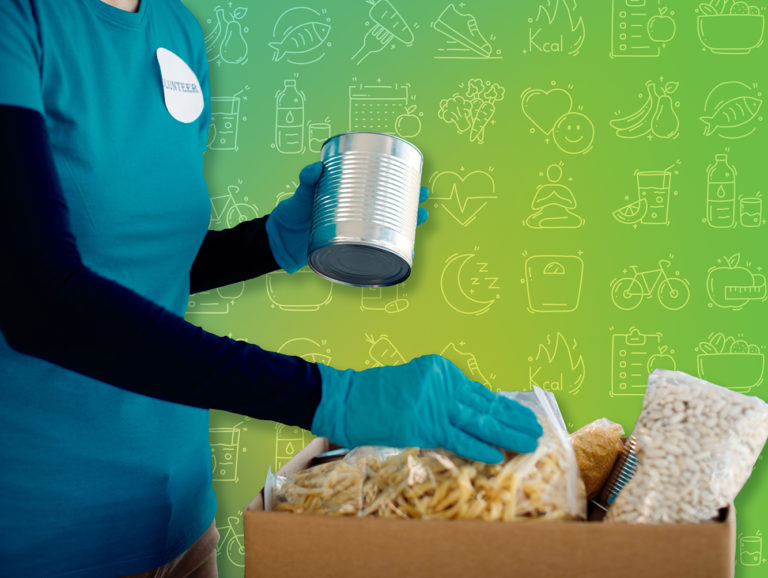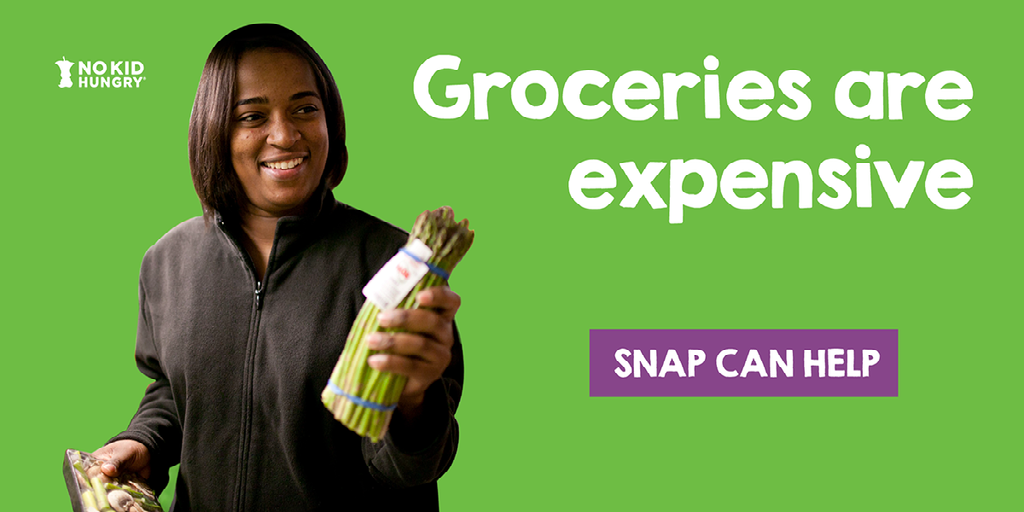Federal Nutrition Program Referral

What is it?
- SBHC staff can offer referrals to financial assistance programs that mitigate household food costs and provide sustainable support to address food insecurity.
- Referrals to federal nutrition programs can have one of the lowest barriers to entry of any method for addressing food insecurity for your patients. Whether or not your SBHC is conducting screening for food insecurity, you can incorporate messaging, information, or warm handoff referrals regarding federal nutrition programs for which families may be eligible.
- Any U.S. citizen and certain lawfully present non-citizens can receive SNAP benefits if they qualify. The program is available nationwide and may have a different name depending on where you are located (such as CalFresh in California and FoodShare in Wisconsin). To qualify for SNAP, a household’s income has to be below a certain amount based on a state’s requirements. Benefits levels are based on a household’s income and expenses, for example, benefits can be up to $939 a month for a household of four.
- Connecting youth and families to these programs can be vitally important, as children who utilize federal nutrition programs have demonstrated better health and educational outcomes. Benefits for families that are enrolled in the Supplemental Nutrition Assistance Program (SNAP) include: reduction in food insecurity and hunger, improved dietary intake and health, boosts in learning and development, lifting families out of poverty, and stimulating local economies.
– Studies show that SNAP reduces the likelihood of food insecurity by 30%.
– SNAP lifted 7.3 million people people out of poverty, including 3.3 million kids, in 2016 (the most recent data available)
– Overall, SNAP participants incur nearly 25% less medical costs than low-income non-participants in a year.
(more information here) - What Federal Nutrition Programs might families be eligible for?
– SNAP: The Supplemental Nutrition Assistance Program (SNAP – formerly known as food stamps) provides monthly food assistance to eligible families and individuals. It provides direct aid through monthly payments on an Electronic Benefits Card (EBT) that is used to purchase food at stores and farmers’ markets.
– WIC: The Special Supplemental Nutrition Program for Women, Infants, and Children (WIC) is a public health nutrition program that provides nutrition education, nutritious foods, breastfeeding support, and healthcare referrals for income-eligible women who are pregnant or postpartum, infants, and children up to age 5.
– National School Lunch Program (NSLP) & School Breakfast Program (SBP) are two federally assisted meal programs generally operated by public and non-profit private schools. Participating schools must serve meals meeting federal nutrition requirements and offer free or reduced-price meals to eligible students in exchange for cash subsidies from the United States Department of Agriculture (USDA).
– The Summer Food Service Program (SFSP) is a federally-funded, state-administered, and locally-sponsored program of the USDA that allows children to access nutritious meals free of charge when school is out.
More information here - What is the connection between SNAP & Medicaid?
– SNAP and Medicaid have similar eligibility, though not the same – this depends on the options your state has chosen for these programs.
– Applying for one program does not mean you’re automatically eligible and directly enrolled in the other. However, many states have joint applications where you can apply for both programs within the same application. More states are considering this.
– Some states are matching data between SNAP and Medicaid to help increase enrollment, especially within SNAP, since these programs are focused on serving similar populations

How does it work?
- Promote
– Inform families of programs and the health and educational benefits of participation. Food program information can be mailed with registration materials, distributed at visits, sent with other SBHC communications, or linked on the SBHC’s website. Providers or other staff can also follow-up with these resources for families that screen positive for food insecurity.
1. Health-based messaging “SNAP has helped my patients afford the nutritious foods needed to prevent diabetes”
2. Build Program Knowledge: “The school’s summer recreation, learning, and meal programs will help your child be ready for the next school year”
3. Mitigate Stigma: “I’m seeing so many people who are having a hard time affording food, so I ask all of my patients a few questions about access to food. There are many community resources available that are free and may be useful to you” (more information here).
– Understand the barriers that families may experience in accessing benefits. Educate staff at the clinic to be able to provide accurate information and capitalize on their status as a trusted messenger.
- Ask
– Ask all Medicaid Beneficiaries if they are enrolled in SNAP. As an alternative to food insecurity screening, which can be perceived as stigmatizing, ask all Medicaid patients about their participation in SNAP. There are overlapping qualifiers for both programs, and families are often eligible for both, though more families are likely to enroll in Medicaid than SNAP.
1. Lead with Resources: “Are you enrolled in SNAP? Are you aware of the summer meal program?”
2. Normalize Participation: “So many of my patients have benefitted from SNAP and the Summer Meal Program” - Assist
– Facilitate enrollment in SNAP and other federal food programs by offering application assistance. This may be provided on-site through your SBHC (i.e., a social worker orcommunity health worker [CHW]), but it can also be a warm handoff to a community partner or patient advocate outside of your SBHC.
1. The advantages include accessible and supportive enrollment assistance for all that need it and a higher likelihood of families following through on enrollment.
2. Identify and utilize critical opportunities to support families to enroll, such as pairing enrollment for SNAP with Medicaid or offering assistance at health visits for Medicaid beneficiaries.
– Many organizations offer enrollment assistance, including state human services, community organizations like local food banks, and 211 or other call centers. Identify partners that you may work with in your community to support families to enroll in benefits. - Educate your SBHC staff
– Lack of healthcare staff knowledge of federal nutrition programs can be a barrier to SNAP enrollment (more information here). Interviews conducted in Mesa County, CO by Dr. Andrea Nederveld revealed that the healthcare staff lacked knowledge of the following:
1. SNAP program and its health benefits
2. The extent of stigma people experiencing food insecurity felt
3. Their patients sometimes perceived screening as judgment
Resources
- CalFresh Outreach Toolkit
- Customizable Letter to Families – Announcing Free Meals for All Kids
- National School Lunch Program Fact Sheet
- Promote Summer Meals:
– FAQs
– Facebook and Twitter
– Letter to Parents - Rush Summer Food Pop-Up Flyer
- The School Breakfast Program
- Upcoming Webinar: Messages for Communicating with Eligible Immigrant Families about Public Benefit Programs – School-Based Health Alliance (sbh4all.org)
- SNAP Outreach in Schools Toolkit
- Summer Meals Outreach Toolkit
- SNAP application assistance is often available through community organizations or local food banks
– About SNAP
– SNAP State Directory
– Sign Up for SNAP (formerly known as Food Stamps) mRelief: mReleif is a elibility screener that helps you sign up for SNAP (food stamps) and connects you to local assistance in your community. - The Role of the Federal Child Nutrition Programs in Improving Health and Well-Being
- Strengthening the Child Nutrition Programs
Resources and messaging for immigrant families
- Words That Work Brief (No Kid Hungry)
- Words That Work Brief (Protecting Immigrant Families)
- Translated Effective Messages: Available in Arabic, English, French, Haitian Creole, Korean, Simplified Chinese, Spanish, Tagalog, and Vietnamese.
- Affordable Connectivity Program
- Messages for Communicating with Eligible Immigrant Families about Public Benefit Programs





